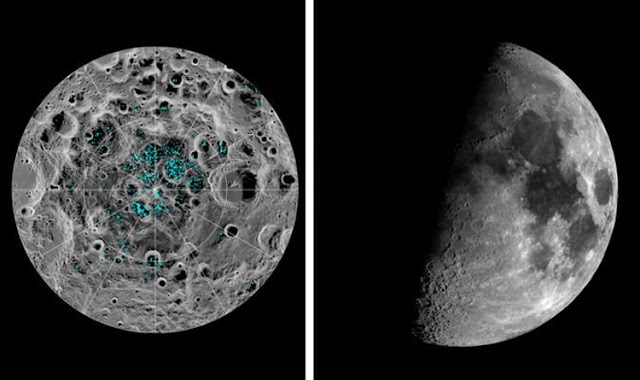 |
| Photo: www.express.co.uk |
In the pursuit of lunar exploration, the race to the moon's south pole has captured the attention of space agencies worldwide. India, in particular, is gearing up to achieve a significant milestone with its upcoming Chandrayaan-3 mission, scheduled for launch on July 14, 2023. This daring endeavor not only symbolizes India's expanding space ambitions but also holds the promise of unraveling the mysteries of lunar water ice - a resource that could play a pivotal role in shaping the future of space exploration.
As early as the 1960s, even
before the historic Apollo landings, scientists had theorized about the
potential existence of water on the moon. However, the initial analyses of
lunar samples from the late 1960s and early 1970s seemed to suggest a dry lunar
surface. It wasn't until recent years that breakthroughs in technology allowed
researchers to revisit these samples and make groundbreaking discoveries.
In 2008, a team of researchers
from Brown University utilized advanced technology to identify hydrogen within
minute beads of volcanic glass found within the lunar samples. The Indian Space
Research Organisation's Chandrayaan-1 probe, equipped with a NASA instrument,
detected water on the moon's surface in 2009. Subsequently, another NASA probe
uncovered the presence of water ice beneath the moon's south pole, hidden
beneath its surface. The shadows of the craters in the south pole were revealed
to contain the highest concentrations of water ice, as indicated by the 1998
Lunar Prospector mission.
The significance of water on
the moon cannot be overstated. These pockets of ancient water ice could offer
valuable insights into lunar volcanoes, the material transported to Earth by
comets and asteroids, and the origins of Earth's oceans. Beyond its scientific
importance, water ice could serve as a precious resource for future lunar
exploration. It holds the potential to provide drinking water for astronauts,
assist in equipment cooling, and even be converted into hydrogen for fuel and
oxygen for breathing - essential elements for sustained missions to Mars or
lunar mining operations.
Despite the ambitious pursuit
of lunar resources, the principles of space exploration remain bound by
international agreements. The United Nations Outer Space Treaty of 1967 forbids
any nation from claiming sovereignty over the moon, while commercial operations
in space remain unregulated. Efforts like the Artemis Accords, led by the United
States, aim to establish guidelines for moon exploration and resource
utilization, but not all nations have joined this initiative.
Navigating the challenges of
landing at the moon's south pole presents a unique set of obstacles. With a
history of failed landings, including Russia's recent Luna-25 craft, which
tragically crashed on approach, the inhospitable terrain of the south pole
demands careful consideration. Contrasted with the relatively smoother
equatorial regions targeted by previous missions, the south pole boasts a
rugged landscape dotted with craters and deep trenches.
As India's Chandrayaan-3
mission remains on track for a hopeful landing, it signifies the nation's
persistence in mastering the complexities of lunar exploration. With both the
United States and China also eyeing missions to the south pole, the lunar
frontier promises a wealth of opportunities for scientific discovery and
innovative space exploration.
Posting Komentar untuk "Exploring the Lunar South Pole: Unveiling the Quest for Water and Exploration"